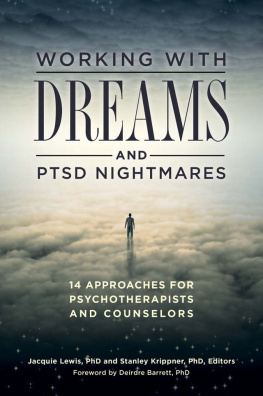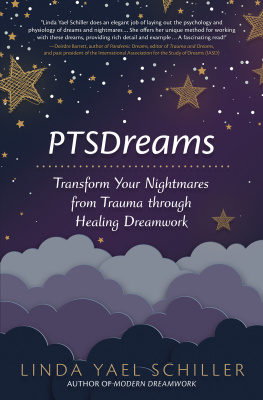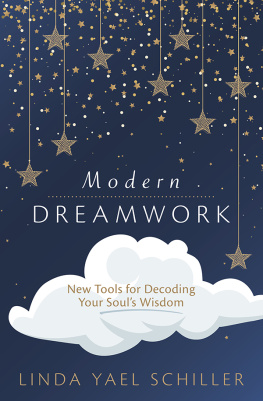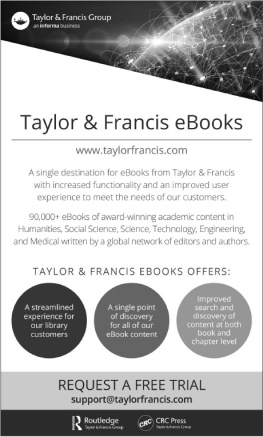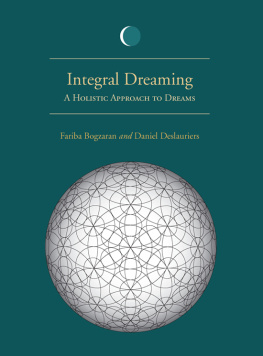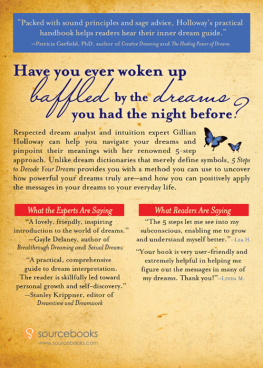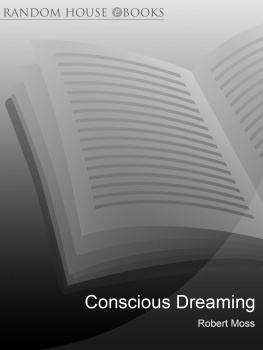Praise for Working with Dreams and PTSD Nightmares
This book gathers the most experienced and talented group of dream explorers actively working today. Jacquie E. Lewis and Stanley Krippner have presented readers with an extremely useful and well-organized survey of various practical methods for interpreting dreams and gleaning their multiple dimensions of meaning. Anyone involved in therapy, counseling, or caregiving will find this book an outstanding resource.
Kelly Bulkeley, PhD
Author, Big Dreams:
The Science of Dreaming and the Origins of Religion
This exciting new book on dreamwork is aimed at both professional therapists and individuals who use their dreams as a growth vehicle. The editors have drawn upon a wide range of specialists in the field offering various techniques, often based in theoretical assumptions, but also ones that are more empirically driven. The bottom line is that there are depth techniques herein for important work, which will satisfy most predilections.
Jayne Gackenbach, PhD
Editor, Conscious Mind, Sleeping Brain
Past President, International Association for the Study of Dreams
This is an indispensable text for counselors and psychotherapists. Stanley Krippner has made a stellar contribution over many decades to our understanding of dreaming, shamanism, and consciousness, marrying the best of science and scholarship to a humanistic concern for lived experience and respect for the traditions of indigenous dreaming peoples. Now, with coeditor Jacquie Lewis and their many distinguished contributors, they bring us an emergency medical kit for those who are called on to treat the serious malaise of dream deprivation in modern societyand its concomitant, the woeful inexperience of many in the caring and clinical professions when it comes to helping people to work with dreams.
Working with Dreams and PTSD Nightmares brings together a wide spectrum of approaches, from Gestalt to cognitive-behavioral, from Freud and Jung to the Ullman Method of dream appreciation and body-centered focusing. The contributors are joined in a concern to offer practical recourses for nightmare relief and to help PTSD sufferers to find their way through. Many of them provide transcripts of sessions with clients or dream-sharing groups that demonstrate, step by step, how they work with their preferred techniques. There are valuable suggestions on how to help those who are new to dreamwork to remember their dreams, step beyond their fears and keep coming back to work with more dreams.
Robert Moss
Author, Conscious Dreaming , Active Dreaming ,
and The Secret History of Dreaming
Powerful! Great place for therapist, client, and interested reader alike to start, to sort out a diversity of dreamwork approachesfrom Freudian, to Jungian, to cognitive-behavioral, transpersonal, focusing, and much more, even including cutting-edge approaches such as tapping or transformation of PTSD nightmares. We humans literally spend years of our lives in the dream state, and this book can open new worlds and new ways of knowing, especially for persons in the West just discovering the wisdom of dreams. Each of 14 approaches includes authoritative information and examples, all from experts in the field. Not to be missed.
Ruth Richards, PhD, MD
Professor of Psychology, Saybrook University
Editor, Everyday Creativity and New Views of Human Nature
Working with Dreams and PTSD Nightmares
14 Approaches for Psychotherapists and Counselors
Jacquie E. Lewis , PhD , and Stanley Krippner , PhD , Editors
Foreword by Deirdre Barrett , PhD
Copyright 2016 by ABC-CLIO, LLC
All rights reserved. No part of this publication may be reproduced, stored in a retrieval system, or transmitted, in any form or by any means, electronic, mechanical, photocopying, recording, or otherwise, except for the inclusion of brief quotations in a review, without prior permission in writing from the publisher.
Library of Congress Cataloging-in-Publication Data
Names: Lewis, Jacquie E., editor. | Krippner, Stanley, 1932 editor.
Title: Working with dreams and PTSD nightmares : 14 approaches for psychotherapists and counselors / Jacquie E. Lewis, PhD and Stanley Krippner, PhD, editors ; foreword by Deirdre Barrett, PhD.
Description: Santa Barbara, California : Praeger, 2016. | Includes bibliographical references and index.
Identifiers: LCCN 2016011801 | ISBN 9781440841279 (hardback) | ISBN 9781440841286 (ebook)
Subjects: LCSH: DreamsTherapeutic use. | Dream interpretation. | Nightmares. | Post-traumatic stress disorderTreatment.
Classification: LCC RC489.D74 .W67 2016 | DDC 616.85/2106dc23
LC record available at https://lccn.loc.gov/2016011801
ISBN: 978-1-4408-4127-9
EISBN: 978-1-4408-4128-6
20 19 18 17 16 1 2 3 4 5
This book is also available as an eBook.
Visit www.abc-clio.com for details.
Praeger
An Imprint of ABC-CLIO, LLC
ABC-CLIO, LLC
130 Cremona Drive, P.O. Box 1911
Santa Barbara, California 93116-1911
www.abc-clio.com
This book is printed on acid-free paper 
Manufactured in the United States of America
- ... The second principle admits that we
- Can cultivate, develop (like we do
- The ordinary waking memory)
- The dreaming or oneiric memory too
- The simplest method is to simply
- Make written notes on each dream passing through
- As soon as were awakened by the morning light
- And every time that we wake up during the night
- After a while our memories begin
- To lend themselves to the new regimen
- And with the practice of this discipline
- We learn to reconstruct our dreams, amen
- And odd as it must seem, as though theyve been
- Flattered by the honor we are paying them
- Our dreams become less incoherent, more regular
- Like children, knowing they are watched, on their best behavior
- Dreams are the product of an organ which
- During the waking states under control
- And tuned exclusively to Reasons pitch
- In sleep this organs independent role
- Is manifest; it wanders through the rich
- Illimitable universal soul
- And drops the foolish notion of those twin illusions
- Space and Time, which mask eternal present, in confusions.
Ros Cohen
copyright 2003, 2015
Contents
| Deirdre Barrett |
| Jacquie E. Lewis and Stanley Krippner |
| Alan G. Vaughan |
| Milton Kramer |
| Jason Dias |
| Kenneth Meyer |
| Jacquie E. Lewis and Stanley Krippner |
| Leslie Ellis |
| Jeremy Taylor |
| Jacques Montangero |
| Clara E. Hill and Patricia T. Spangler |
| Alan Siegel |
| Gayle Delaney |
| G. Scott Sparrow |
| Fariba Bogzaran and Daniel Deslauriers |
| Robert Hoss and Lynne Hoss |
| Jacquie E. Lewis |
| Stanley Krippner |
I wish that Working with Dreams and PTSD Nightmares had been available when I was in graduate school in the mid-1970s. There were few courses on dream interpretationcertainly none at my university. Most of the existing literature was either classic psychoanalytic writingFreud and Jungor Calvin Halls empirical approach. Practical advice on Heres what you do if a patient brings a dream to therapy... was nowhere to be found. Professors of a psychoanalytic persuasion sometimes offered abstract descriptions of dream interpretation. Many behaviorists blithely suggested that trainees tell patients that dreams were not relevant to psychotherapy!

